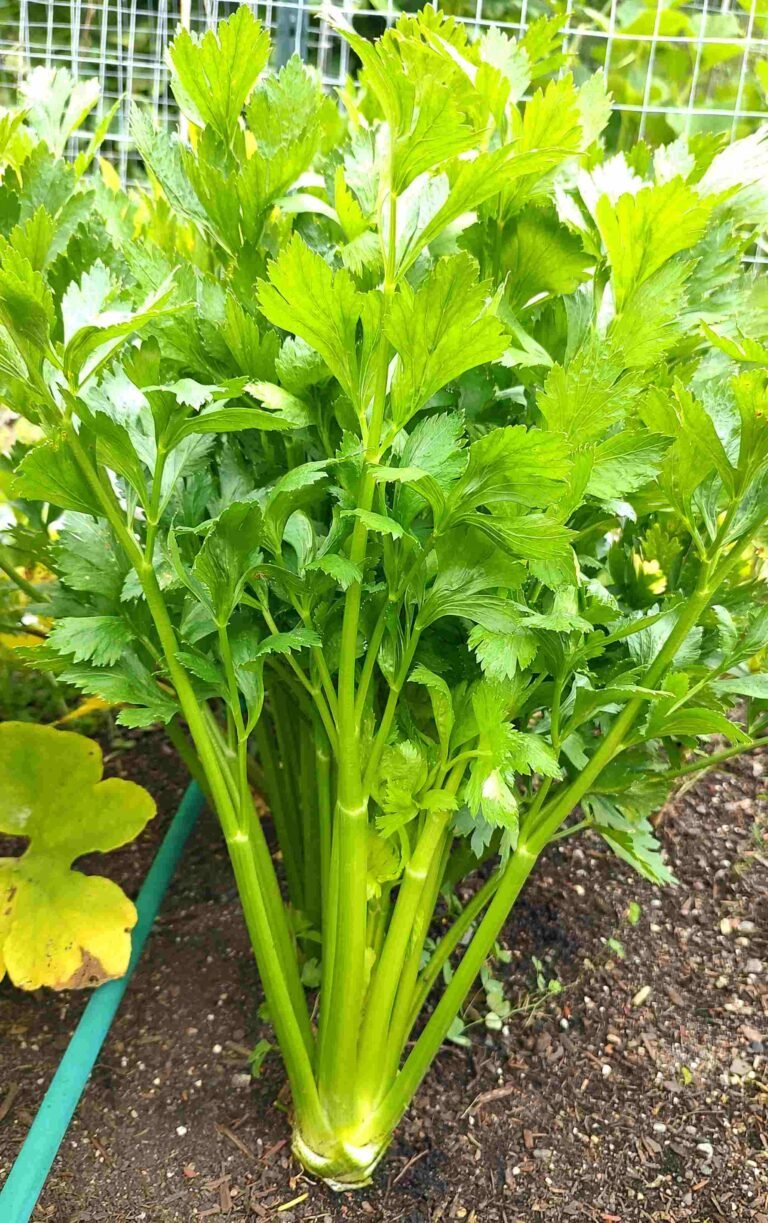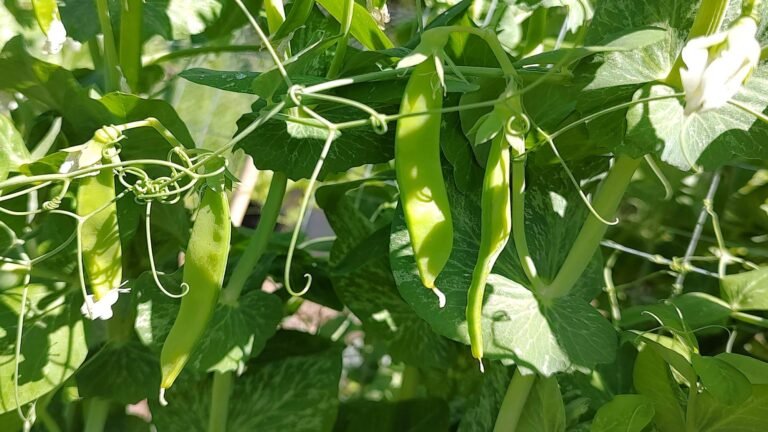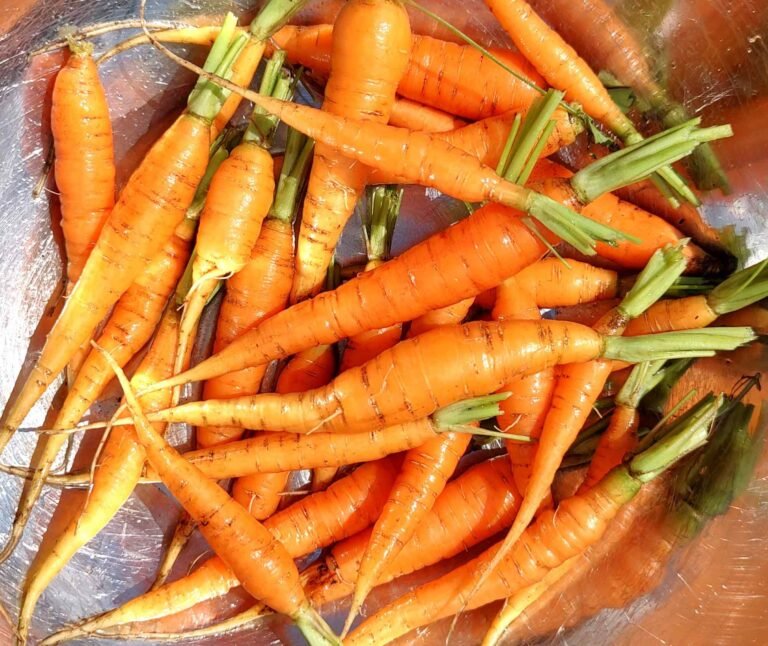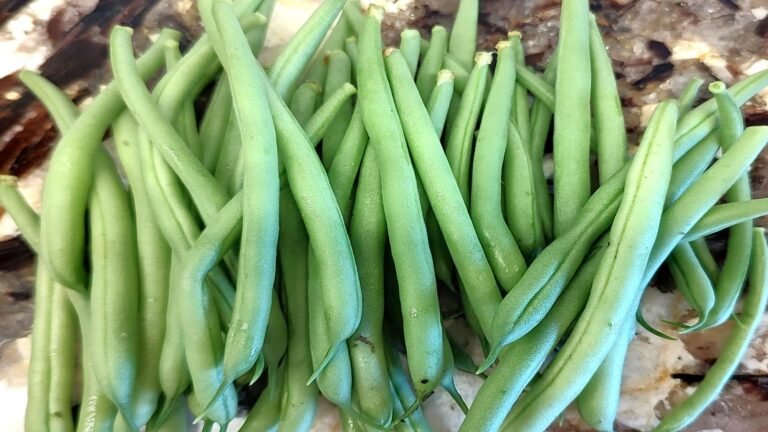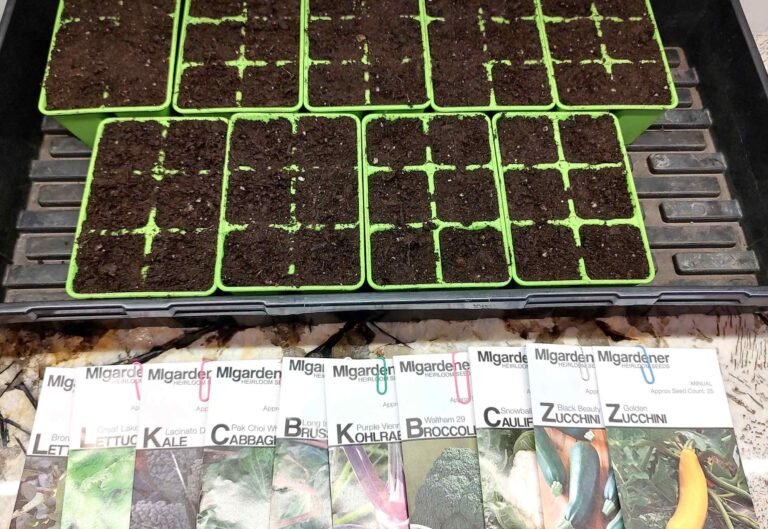With its crisp leaves and versatility in the kitchen, lettuce can be a staple in your home garden. This guide will teach you how to grow lettuce, from selecting the right variety to harvesting and beyond.
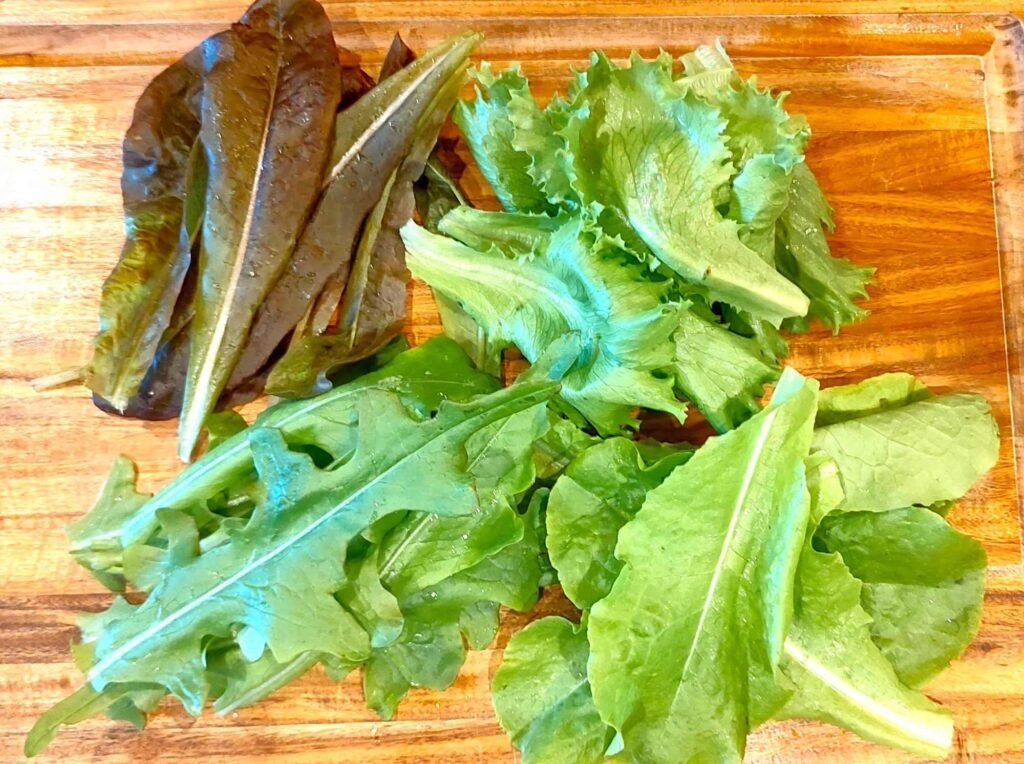
How to Grow Lettuce: Choosing the Variety
Lettuce comes in various types, each with its unique characteristics:
- Leaf Lettuce: Includes varieties like Romaine and Butterhead. It has loose leaves and can be harvested leaf by leaf.
- Head Lettuce: Forms a compact head. Popular varieties include Iceberg and Butterhead.
- Romaine Lettuce: Known for its elongated leaves and crisp texture. It’s perfect for salads and sandwiches.
- Butterhead Lettuce: Features tender, buttery leaves that form a loose head.
Consider your climate and available space when selecting a variety. Leaf lettuces are ideal for small gardens and containers, while head lettuces might need a bit more space. I like to grow a variety of shapes, textures, and colors. The photo above features (clockwise from top, left): Red Romain, Great Lakes Crisphead, Buttercrunch, and Bronze Guard.
How to Grow Lettuce: Planting
Lettuce thrives in well-drained, nutrient-rich soil. Here’s how to prepare your garden bed:
- Timing: In cooler climates, sow seeds directly in the garden as soon as the soil can be worked in spring. For warmer regions, you might need to plant in the fall or winter to avoid the heat of the summer. If starting seeds indoors, start them about 4 weeks before the last frost date for your area. Sow seeds 1/8 to 1/4 inch deep. See my article about seed starting: How to Grow Plants from Seed
- Location: Choose a spot that gets at least 4-6 hours of sunlight daily. Lettuce can tolerate partial shade, especially in hot climates.
- Soil Preparation: Amend your soil with compost or well-rotted manure to improve its structure and nutrient content.
- Planting: Space lettuce plants about 4 to 6 inches apart for leaf varieties and 10 to 12 inches for head varieties.
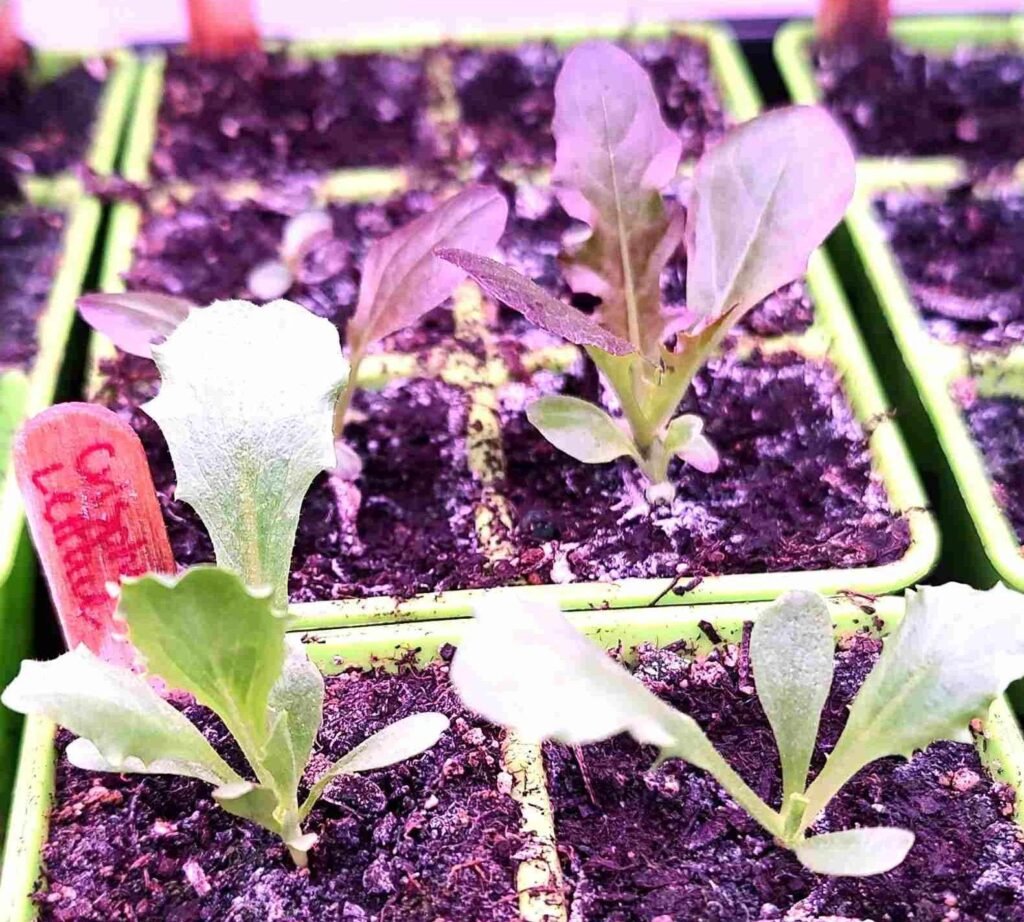
How to Grow Lettuce: Plant Care
- Thinning: If you sowed your seeds densely, thin them to the desired spacing based on the variety once the seedlings have 2-3 sets of true leaves. Good spacing allows for proper air circulation and reduces competition for nutrients.
- Watering: Lettuce needs regular watering to keep the soil consistently moist. Water at the base to avoid wetting the foliage, which can lead to disease. Consider adding mulch around the base of the plants to help retain moisture in the soil.
- Fertilizing: I find that fertilizing is not necessary as long as I amend the soil with compost at the start of the growing season. If fertilizing is desired, use a balanced, organic fertilizer every few weeks to provide essential nutrients.
How to Grow Lettuce: Managing Pests and Diseases
- Pests: Watch out for aphids, slugs, and snails. Use organic pest control methods like neem oil or insecticidal soap and encourage beneficial insects such as ladybugs. Rabbits and deer love to eat lettuce and will wipe out your crop in one day. Protect your plants with some type of barrier or fence to keep them out.
- Diseases: Common issues include downy mildew and lettuce drop. Ensure proper spacing for good air circulation and avoid overhead watering to reduce the risk of fungal diseases.
How to Grow Lettuce: Harvesting
Harvest lettuce in the morning when the leaves are the most crisp and have the highest water content.
- Leaf, Romain, and Butterhead Lettuce: Pick outer leaves as they reach a desirable size, allowing the inner leaves to continue growing. You can harvest leaves continuously throughout the growing season. This is called the “cut and come again” method.
- Head Lettuce: Harvest when the heads are firm and fully formed. Cut the entire head off at the base, just above the soil level. Head lettuce can also be harvested like leaf lettuce by removing the outer leaves before the plant forms a firm head.
As the summer heat starts the climb, lettuce will begin to bolt. This is the process where the plant starts to produce flowers/seeds at the end of its lifecycle. At this point, the leaves will be bitter and not enjoyable to eat.
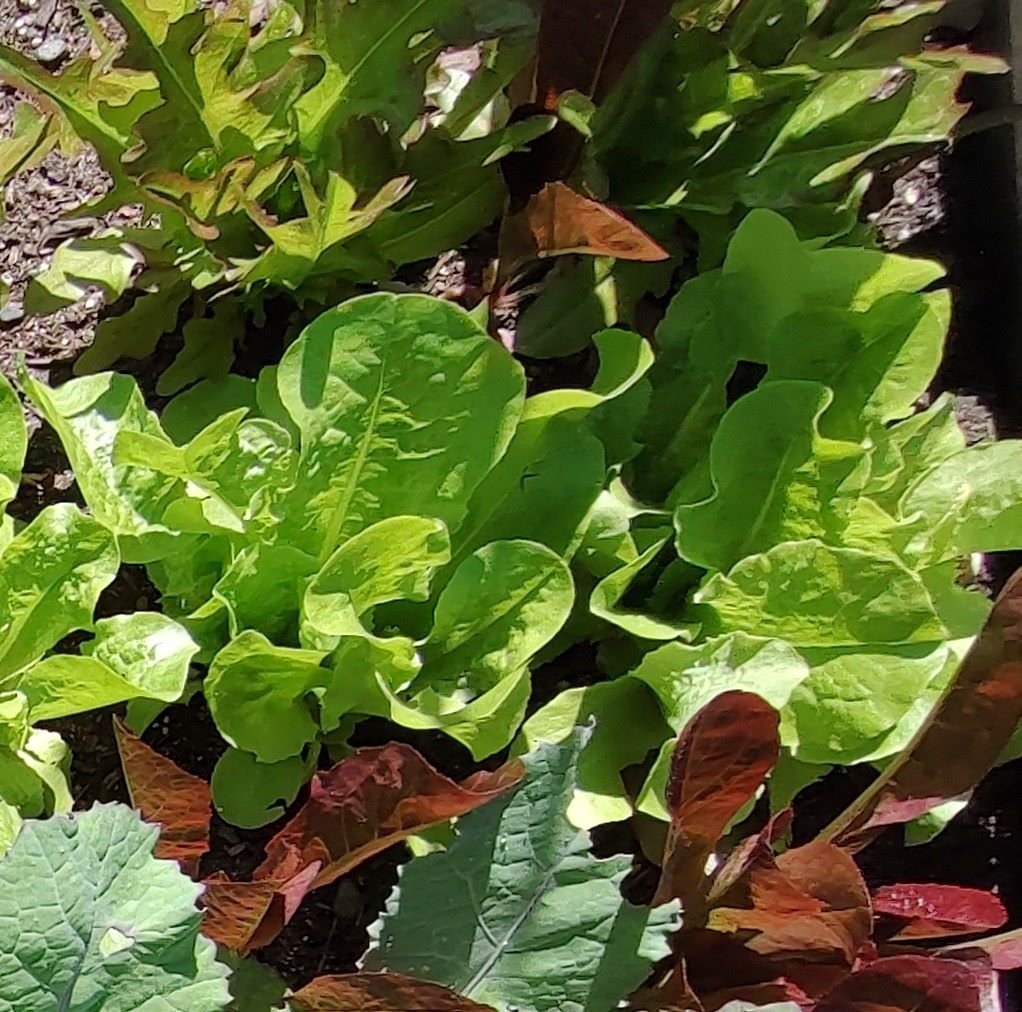
How to Grow Lettuce: Storage and Use
To enjoy fresh lettuce throughout the growing season, consider these tips:
- Storage: Immediately after harvesting, rinse the lettuce with cold water and dry with a towel or lettuce spinner. Store in a sealed container or plastic storage bag in the refrigerator. Lettuce will be good for 2 weeks or more with proper storage.
- Uses: Lettuce can be used to create endless variations of fresh salads and is also commonly used on sandwiches or burgers.
- Succession Planting: Sow new seeds every 2-3 weeks if you want a continuous supply of fresh lettuce.
- Season Extension: Use row covers or cloches to protect lettuce from frost and extend the growing season into cooler months.
Final Thoughts
Lettuce is one of the easiest crops to grow and rewards you with fresh, crisp leaves for salads, sandwiches, and more. Lettuce is perfect for creating meals when you don’t have a lot of time or are craving something fresh. Whether you’re growing in a small container or a large garden bed, lettuce is a versatile and nutritious addition to your home garden!
Check Out My Similar Posts
You Might Also Like
No posts


